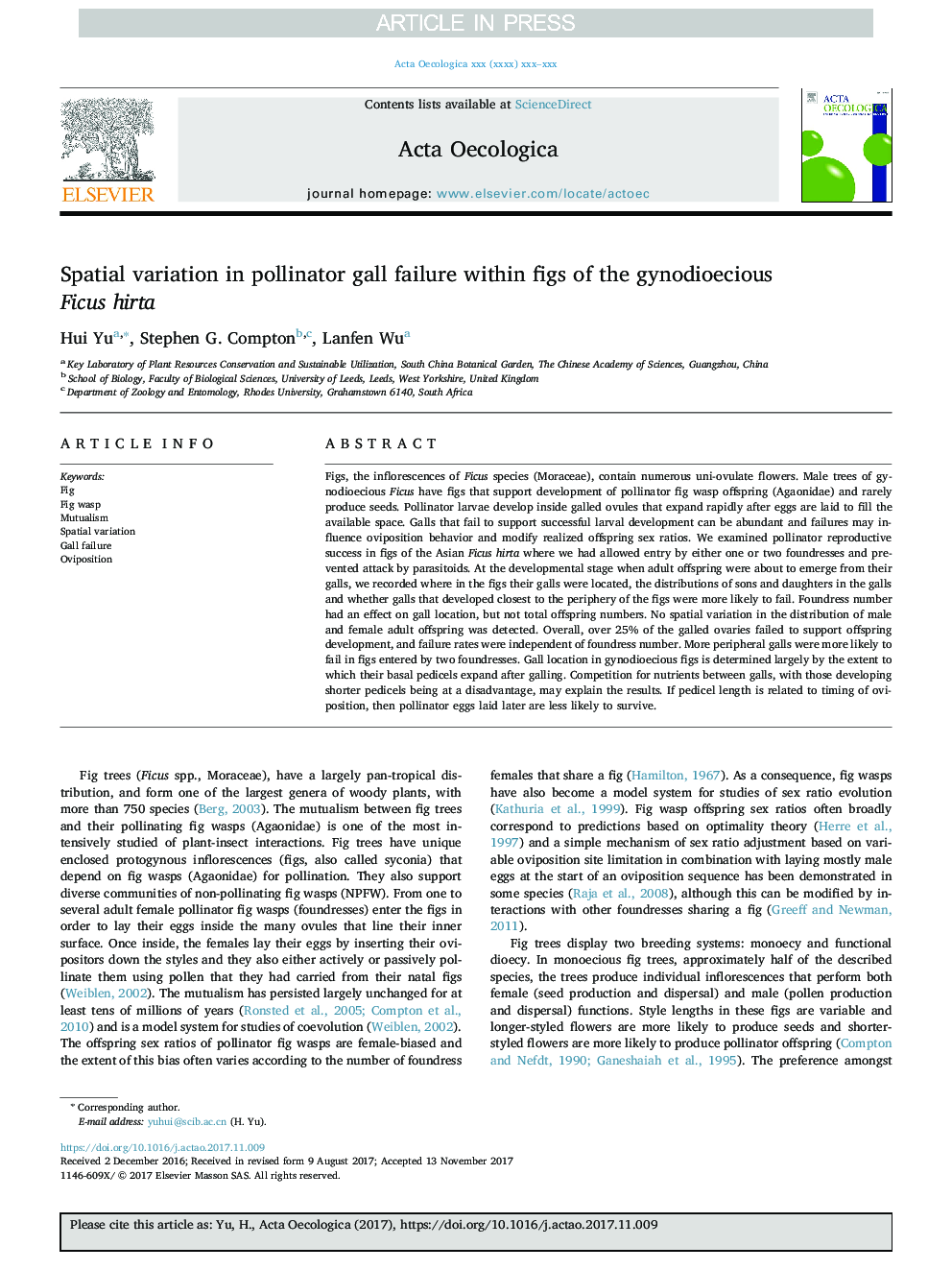| کد مقاله | کد نشریه | سال انتشار | مقاله انگلیسی | نسخه تمام متن |
|---|---|---|---|---|
| 8846481 | 1617682 | 2018 | 6 صفحه PDF | دانلود رایگان |
عنوان انگلیسی مقاله ISI
Spatial variation in pollinator gall failure within figs of the gynodioecious Ficus hirta
دانلود مقاله + سفارش ترجمه
دانلود مقاله ISI انگلیسی
رایگان برای ایرانیان
کلمات کلیدی
موضوعات مرتبط
علوم زیستی و بیوفناوری
علوم کشاورزی و بیولوژیک
بوم شناسی، تکامل، رفتار و سامانه شناسی
پیش نمایش صفحه اول مقاله

چکیده انگلیسی
Figs, the inflorescences of Ficus species (Moraceae), contain numerous uni-ovulate flowers. Male trees of gynodioecious Ficus have figs that support development of pollinator fig wasp offspring (Agaonidae) and rarely produce seeds. Pollinator larvae develop inside galled ovules that expand rapidly after eggs are laid to fill the available space. Galls that fail to support successful larval development can be abundant and failures may influence oviposition behavior and modify realized offspring sex ratios. We examined pollinator reproductive success in figs of the Asian Ficus hirta where we had allowed entry by either one or two foundresses and prevented attack by parasitoids. At the developmental stage when adult offspring were about to emerge from their galls, we recorded where in the figs their galls were located, the distributions of sons and daughters in the galls and whether galls that developed closest to the periphery of the figs were more likely to fail. Foundress number had an effect on gall location, but not total offspring numbers. No spatial variation in the distribution of male and female adult offspring was detected. Overall, over 25% of the galled ovaries failed to support offspring development, and failure rates were independent of foundress number. More peripheral galls were more likely to fail in figs entered by two foundresses. Gall location in gynodioecious figs is determined largely by the extent to which their basal pedicels expand after galling. Competition for nutrients between galls, with those developing shorter pedicels being at a disadvantage, may explain the results. If pedicel length is related to timing of oviposition, then pollinator eggs laid later are less likely to survive.
ناشر
Database: Elsevier - ScienceDirect (ساینس دایرکت)
Journal: Acta Oecologica - Volume 90, July 2018, Pages 75-80
Journal: Acta Oecologica - Volume 90, July 2018, Pages 75-80
نویسندگان
Hui Yu, Stephen G. Compton, Lanfen Wu,